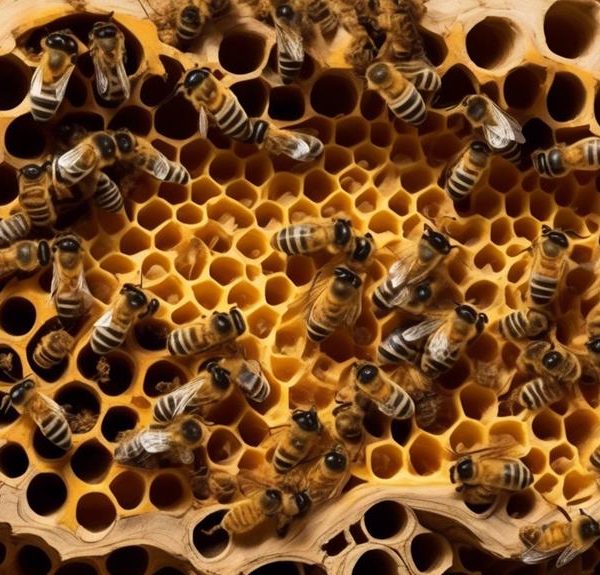Discover the potential risks and consequences of leaving bees in your chimney, and why it might not be as harmless as you think.
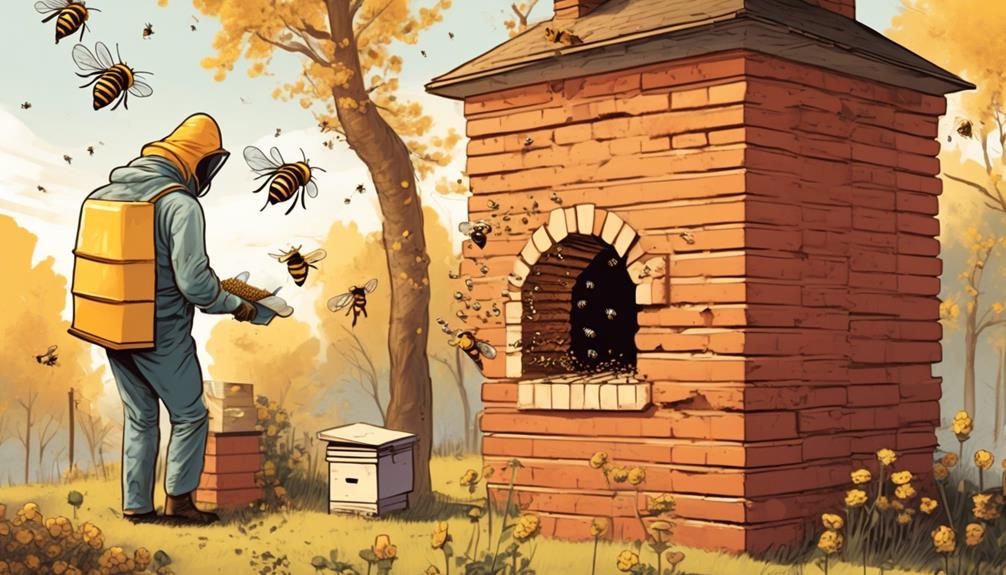
Can You Leave Bees in Chimney?
Just when you thought your day couldn't get any buzzier, you hear a faint humming emanating from your chimney. You discover a hive of bees have made it their home.
Now, you're left with a rather peculiar question – can you leave bees in the chimney? While it might seem harmless or even beneficial, considering bees' role in maintaining the ecosystem, there are several aspects to consider.
Potential harm to your home, the bees themselves, and the people living within are all factors you can't ignore.
Stay tuned to navigate this sticky situation.
Key Takeaways
- Bee infestations in chimneys can lead to structural damage, honey seepage, and increased risk of exposure to diseases and parasites.
- Bees in chimneys can block proper ventilation, leading to a buildup of carbon monoxide and an increased risk of chimney fires.
- Professional bee removal options prioritize the preservation of the bee colony while ensuring the safety of the homeowner and property.
- DIY bee removal techniques, such as using smoke as a deterrent and 'trap-out' methods, require a deep understanding of bee behavior and safety precautions.
Understanding Bee Infestations
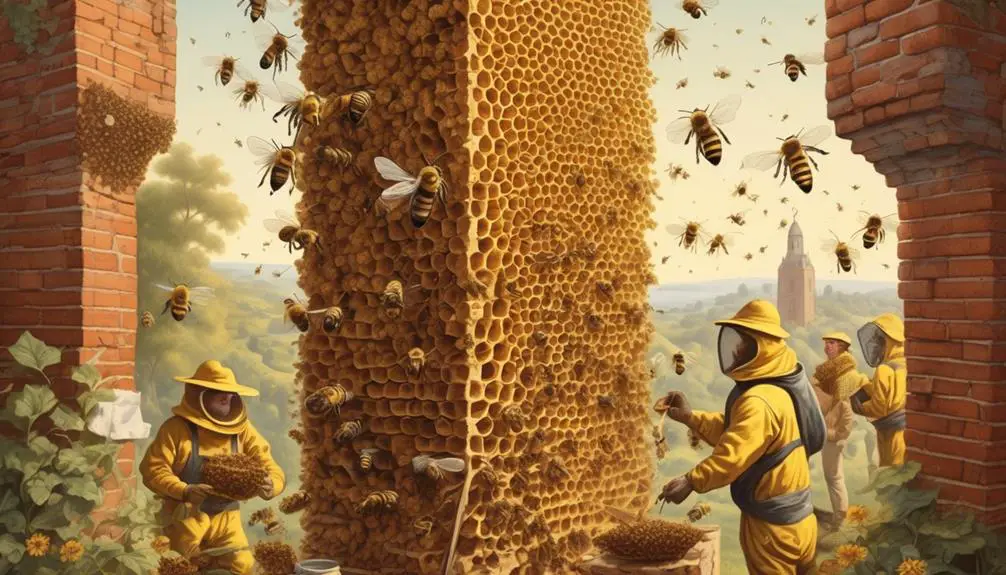
To understand bee infestations, you first need to grasp the fundamentals of bee behavior and their reasons for choosing your chimney as a nesting site. Bees, primarily the honeybee species, are social insects that live in colonies. They're constantly searching for protected, spacious areas to establish their homes. Your chimney, with its confined space and relative safety from predators, presents an ideal habitat.
Bees usually swarm in the spring and early summer, a behavior that's part of their reproductive cycle. When a colony becomes too large, a new queen is produced, and the old queen leaves with a swarm of workers to establish a new colony. This swarm may end up in your chimney, especially if it's unused or uncapped.
The bees aren't there to cause trouble. They're simply following their natural instincts. However, if they've chosen your chimney for their new home, it can lead to problems for you. Besides the obvious danger of stings, a large bee colony can cause structural damage, and the honey they produce may seep into your living spaces, attracting other pests.
Understanding these factors is crucial in addressing and preventing bee infestations.
Potential Risks of Bees in Chimneys
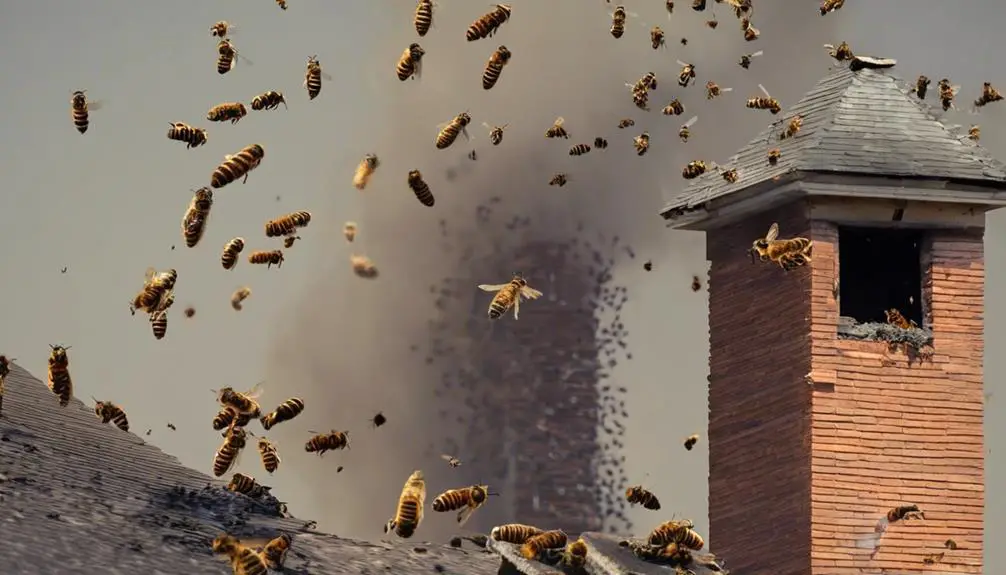
Navigating the potential hazards of a bee infestation in your chimney, you'll soon discover the associated risks are far more complex than just an increased chance of stings.
The presence of bees can compromise the integrity of your chimney structure. As bees construct their hive, they often create honeycombs that seep honey and wax. When melted by the heat of a fire, these substances can infiltrate the masonry, causing structural damage that's costly to repair.
Moreover, bees are known to carry various diseases and parasites. The presence of bees in your chimney can increase the risk of exposure to these pathogens, potentially endangering the health of those living in the house.
Lastly, let's not dismiss the fire risk. When bees build their hives in chimneys, they block the proper ventilation of smoke and gases. This can lead to a build-up of carbon monoxide, a deadly gas, inside your house. It also increases the risk of chimney fires, as the flammable materials in the hive can easily ignite.
Benefits of Bees in Your Chimney
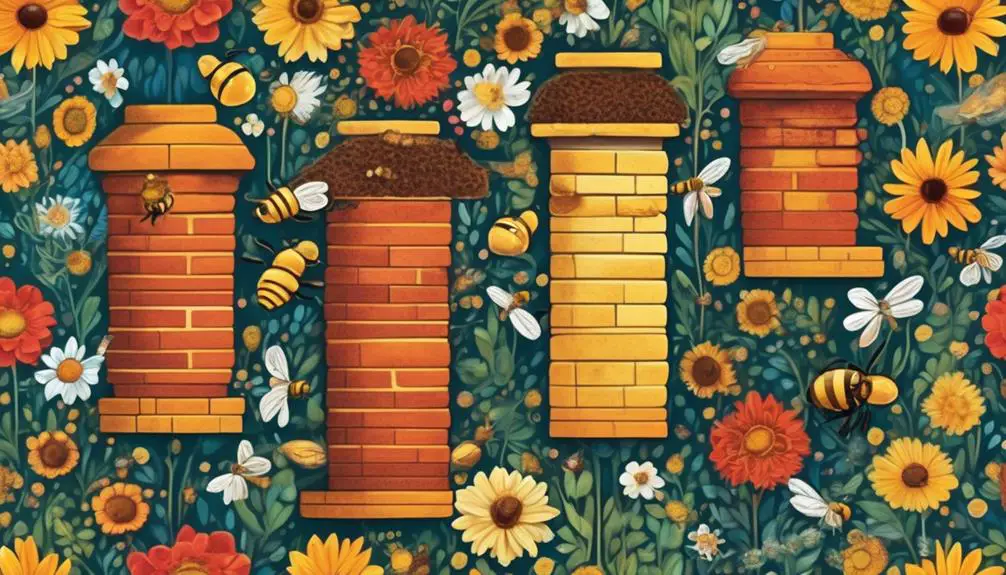
Despite the potential risks previously discussed, it's worth noting that bees residing in your chimney can also offer some unexpected benefits. Bees are renowned pollinators, contributing significantly to local ecosystems by aiding in plant and flower pollination. If your property is home to flowering plants, fruit trees or vegetable gardens, these bees can help boost their health and productivity.
In addition, bees produce honey, which isn't only a nutritious food source but also has medicinal properties. If the bees in your chimney are honey bees, there's a chance you could harvest your own natural, local honey.
Moreover, beeswax, another product of bees, is highly sought after. It's used in various products, from candles to cosmetics. Having a colony in your chimney potentially provides a sustainable source of this valuable resource.
Lastly, bees in your chimney actually reduce the possibility of bird infestations. Birds often nest in chimneys, which can lead to blockages and fire hazards. The presence of bees deters birds from making your chimney their home.
Professional Bee Removal Options
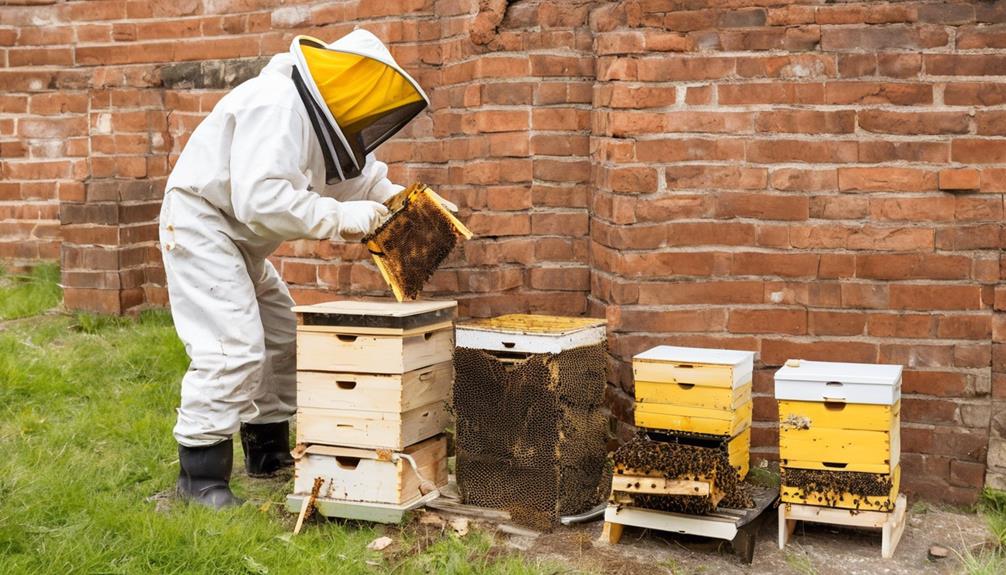
If you're considering professional bee removal, it's important to understand the options available, keeping in mind that the aim should be to remove the bees without causing harm to the colony or your property. Beekeepers and pest control professionals offer services that prioritize the preservation of the colony.
Beekeepers often employ a method known as 'trap-out', where a one-way exit is installed on the entrance of the hive, allowing the bees to leave but not return. Over time, the bees relocate to a new hive provided by the beekeeper. This method requires patience as it can take several weeks to successfully remove the entire colony.
On the other hand, pest control professionals may use a vacuum extraction method. This involves gently vacuuming the bees into a special container that keeps them alive for relocation. However, this method is more invasive and may not be suitable for all situations.
It's crucial to remember that every bee colony is unique, so the removal process may vary depending on the size, location, and species of the bees. Always consult with a professional to ensure the best outcome for both you and the bees.
DIY Bee Removal Techniques
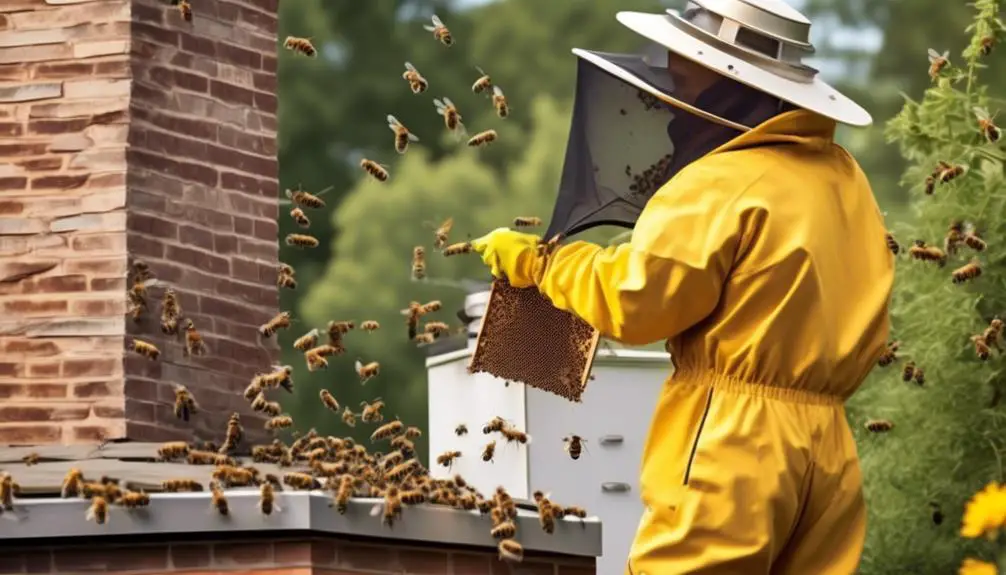
Before diving into professional options, you might be wondering about DIY bee removal techniques, which, while challenging, can be a feasible approach if handled with care and proper knowledge. These techniques often involve the use of common household items, coupled with a deep understanding of bee behavior and safety measures.
One technique is the use of smoke as a bee deterrent. It's known that smoke can disorient bees, reducing their defensive responses. However, be careful not to cause a chimney fire, and ensure the smoke doesn't seep into your home.
Another method is the 'trap-out', where you create an exit for the bees that doesn't allow re-entry. This involves constructing a cone from wire mesh over the hive entrance in the chimney. Make sure to provide an alternative hive for the bees to migrate to. This method requires patience, as it may take a few weeks for all bees to leave the chimney.
Lastly, always wear protective clothing to prevent bee stings. Be aware that if you're dealing with Africanized bees, best known as 'killer bees', DIY removal isn't recommended due to their aggressive nature. In such cases, professional help is advised.
Frequently Asked Questions
What Happens if Bees Are Left in the Chimney During Winter?
If you leave bees in your chimney during winter, they'll likely die due to the cold and lack of food. Bees aren't designed to withstand freezing temperatures and without a food source, they'll starve.
Dead bees can cause a blockage, leading to potential chimney damage. Additionally, the decaying bodies may attract pests.
It's best to remove them before winter sets in for the health and safety of both the bees and your home.
Can Bees Damage the Structure of the Chimney?
Yes, bees can damage your chimney. They'll build hives that can block the flue, causing smoke and dangerous gases to enter your home.
Additionally, their honey can seep into the masonry, causing structural damage over time.
Also, if bees die off in winter, the decomposing bodies can attract pests.
Are There Legal Implications for Removing Bees From My Chimney?
Yes, there can be legal implications for removing bees from your chimney.
In many regions, bees are protected species, and it's illegal to harm or kill them.
You'd need to consult with a local pest control or wildlife expert who's knowledgeable about the laws in your area.
They'll likely recommend a humane removal method that doesn't harm the bees.
It's always best to act responsibly and uphold animal welfare standards.
What Are the Signs That Bees Have Left the Chimney on Their Own?
If you're suspecting bees have vacated your chimney, look for signs like reduced buzzing sounds, less bee activity near the chimney, or no bees seen exiting or entering. You might also spot dead bees around the area.
If you're unsure, it's best to consult a professional. Remember, bees are crucial to the environment, so it's important to handle this situation with care, even if they're causing inconvenience.
Can Bees in the Chimney Affect the Quality of Air in My Home?
Yes, bees in your chimney can affect your home's air quality.
Bees can create large hives that block proper ventilation, causing smoke and harmful gases to build up indoors.
Also, dead bees and hive waste can trigger allergies, causing respiratory issues.
It's crucial you consult a professional to safely remove the bees, ensuring your home's air quality isn't compromised.
Conclusion
In conclusion, while bees in your chimney may seem harmless and beneficial, they pose significant risks. Their presence can cause structural damage and health hazards.
It's best to let professionals handle their removal, but if you're feeling brave, there are DIY techniques available.
Always remember, bees play a crucial role in our ecosystem, so be sure to remove them humanely.
Be smart, be safe, and respect our buzzing friends.


